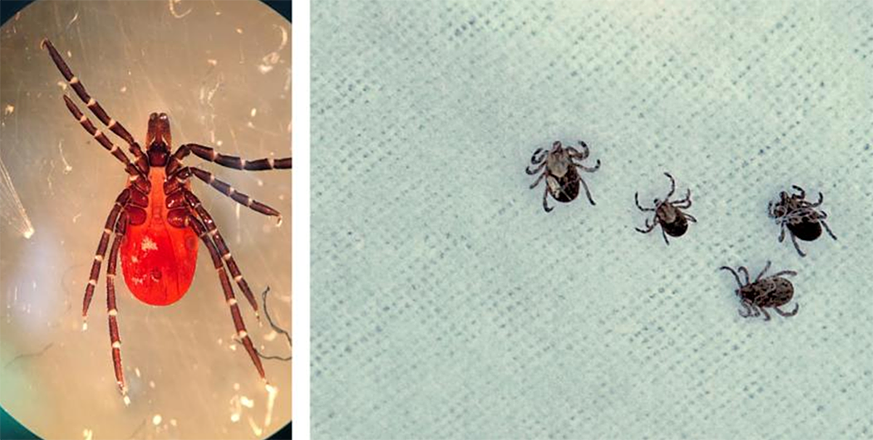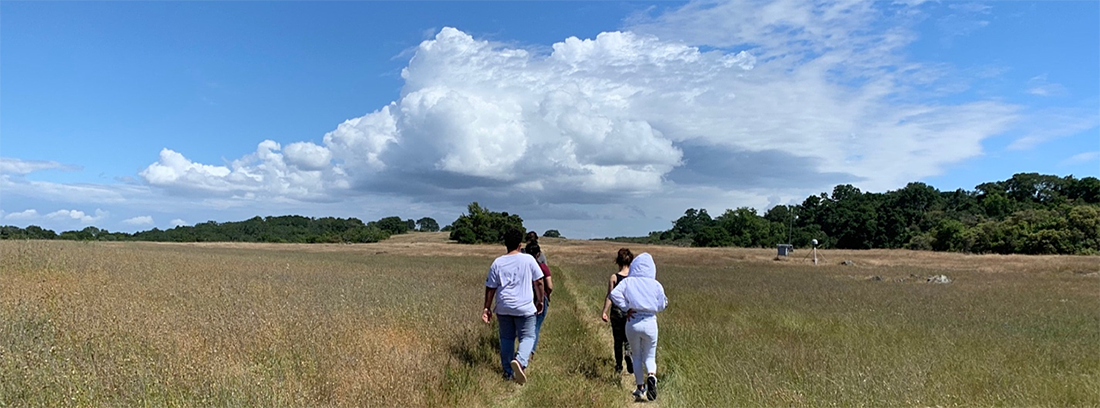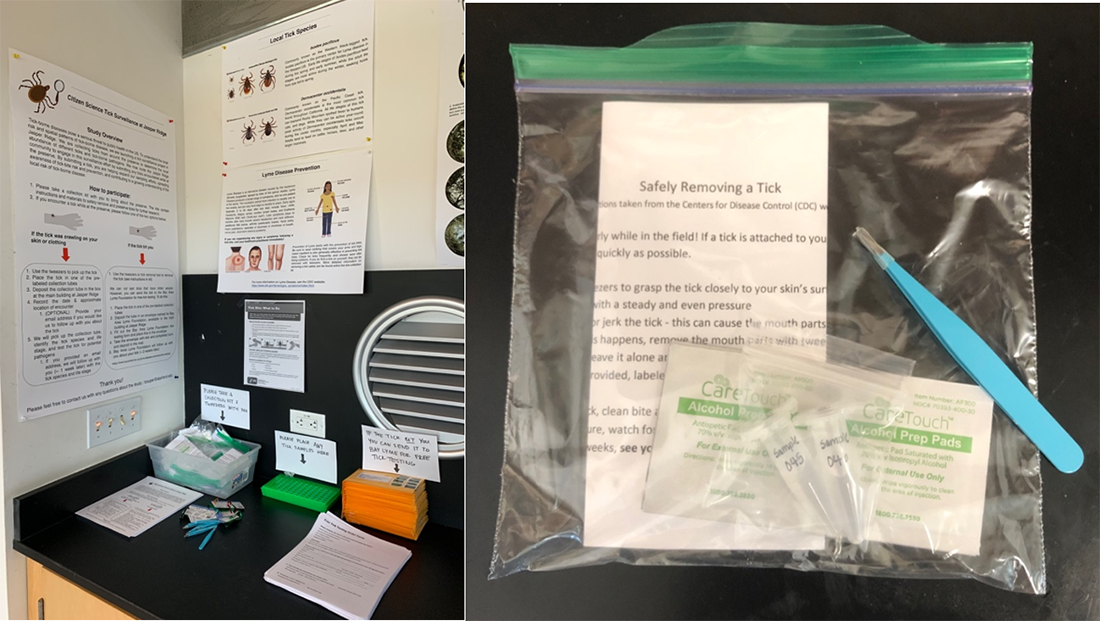Know your tick: Jasper Ridge visitors contribute to human disease research

Ecology is full of scientific names. Escherichia coli, Homo sapiens, Canis lupis. You’ve probably heard of these before. But what about Ixodes pacificus, Dermacentor occidentalis, or Haemaphysalis longicornis? What are these? And more importantly, who cares? The three species listed above are commonly known as the western black-legged tick, the Pacific Coast tick, and the Asian longhorned tick, respectively (Fig. 1). Again, why does this matter? It matters because there are over 90 species of ticks in the US, including 60 in California alone, but only a few transmit diseases to humans. Of the species listed above—the first can transmit Lyme disease, the second can transmit Rocky Mountain Spotted Fever, and the third recently invaded the US but does not (yet) transmit human disease here.

Figure 1. The western black-legged tick, the Pacific Coast tick, and the Asian longhorned tick. Image from the Centers for Disease Control and Prevention (CDC).
This means that knowing what tick species are around, and what species you may encounter, is a huge first step in assessing and mitigating human disease risk. So how do we figure out what tick species are around and what diseases they may be carrying? That’s where you come in! Anyone who visits Jasper Ridge, including students, field researchers, docents, and others can now collect and submit any tick encountered while at the preserve.

Fig. 2. Jasper Ridge visitors contribute to human disease research through the new project focused on tick surveillance and community engagement.
Here’s how it works: When you first arrive at the Leslie Shao-Ming Sun Field Station, you’ll see the tick station and collection kits available on your left (Figs 3 and 4). The collection kits contain tweezers, instructions for how to remove ticks, and collection tubes. You’ll take the collection kit out with you as you go for your hike, conduct research, or whatever you had planned. If you later notice a tick crawling on your arm or hitching a ride on your pants, simply pull it off with the tweezers and place it in the tube (see links for instructions below). Then deposit the tube at the Sun Field Station center on your way out and congratulate yourself for being a citizen scientist! We will collect these ticks, identify the species, and test them for any potential tick-borne pathogens.
For specific instructions on preventing bites and removing ticks from the CDC please click in the following pages. They are available in English and in Spanish: https://www.cdc.gov/ticks/index.html

Figures 3 and 4. Tick collection station and kit available at Jasper Ridge’s Sun Field Station.
Through this process, we can learn what tick species are locally present, how frequently they encounter humans throughout the year, and what tick-borne pathogens they are carrying. Perhaps more importantly, by relying on ticks contributed by Jasper Ridge visitors, we can promote frequent tick checks and tick bite prevention strategies which help reduce the risk of disease transmission.
For more information on their research project please visit the Lisa’s Jasper Ridge research post.
 Lisa Couper is a PhD student in the biology department researching the effects of global change on vector-borne disease. You can follow her on Twitter for more updates @lisa_couper
Lisa Couper is a PhD student in the biology department researching the effects of global change on vector-borne disease. You can follow her on Twitter for more updates @lisa_couper



